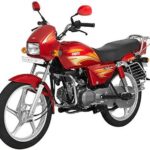12 Fascinating Facts About Bikes in India That Will Amaze You
Bikes in India are not just a mode of transport; they are a cultural phenomenon. From daily commuting to long-distance travel, motorcycles and scooters have been an integral part of Indian life for decades. The evolution of bikes in India reflects the economic growth, technological progress, and lifestyle changes of the nation. In this article, we explore the history, facts, timeline, significance, FAQs, daily life impact, and societal importance of bikes in India, written in a human-friendly, engaging style.
History of Bikes in India
Early Introduction (1940s–1960s):
Bikes were introduced in India primarily by British and European brands.
Royal Enfield, launched in India in 1955, became the first iconic Indian bike brand.
Expansion Era (1970s–1980s):
Companies like Bajaj and Hero began producing two-wheelers domestically.
Scooters like Vespa and Bajaj Chetak became extremely popular for urban commuting.
Modern Era (1990s–2000s):
Liberalization brought Honda, Yamaha, Suzuki, and TVS to India.
Introduction of gearless scooters, commuter motorcycles, and high-performance bikes.
Technological Era (2010–Present):
Bikes now feature fuel injection, ABS brakes, digital displays, electric variants, and hybrid technology.
Companies like Royal Enfield, KTM, and Bajaj focus on premium and adventure bikes, while commuter bikes remain highly popular.
Interesting Facts About Bikes in India
Royal Enfield is often called the “king of Indian roads” due to its iconic status.
India is one of the largest two-wheeler markets in the world.
Commuter bikes like Hero Splendor and Honda CB Shine dominate urban and rural roads.
Motorbike rallies and adventure tourism are growing trends in India.
Scooters like TVS Jupiter and Honda Activa account for high sales among women riders.
The average fuel efficiency of Indian bikes ranges from 40–70 km/l, making them cost-effective for daily travel.
Bikes play a vital role in last-mile connectivity in cities and villages.
Electric bikes like Ola Electric and Ather Energy are gaining popularity.
Bikes are often used in courier services, delivery apps, and logistics, especially in urban areas.
Indian bikes are featured in popular movies, culture, and social media trends.
Safety awareness campaigns are being promoted for helmets, reflective gear, and road discipline.
Motorcycling is becoming a lifestyle choice, with clubs, biking tours, and community events.
Timeline of Bikes in India
1955: Royal Enfield starts production in India.
1960s–1970s: Bajaj Chetak and Vespa scooters dominate urban transport.
1980s–1990s: Hero Honda partnership revolutionizes commuter bikes.
2000s: Global brands like Yamaha, Suzuki, and Honda enter India.
2010s: Rise of sports bikes, adventure bikes, and premium two-wheelers.
2020s: Electric bikes and hybrid motorcycles enter the market, focusing on sustainability and technology.
Significance of Bikes in India
Economic Importance: Bikes are affordable, fuel-efficient, and cost-effective, aiding personal and business transport.
Urban Mobility: They help avoid traffic congestion and reduce commuting time.
Rural Connectivity: Bikes reach remote villages where cars or public transport may not.
Employment Opportunities: Bikes are used in delivery services, courier businesses, and taxi aggregators.
Tourism and Adventure: Motorbiking supports road trips, adventure tourism, and travel experiences.
Cultural Significance: Bikes are a symbol of youth, freedom, and lifestyle choices in India.
Emergency Services: Two-wheelers are used for quick delivery of medicines and urgent supplies.
FAQs About Bikes in India
Q1: Which is the most popular bike in India?
A1: Hero Splendor, Honda CB Shine, and Bajaj Pulsar are among the top-selling bikes.
Q2: Are electric bikes suitable for Indian roads?
A2: Yes, bikes like Ola Electric, Ather, and Hero Electric are designed for urban commuting.
Q3: What is the average fuel efficiency of bikes in India?
A3: Commuter bikes typically offer 50–70 km/l, while scooters provide 40–60 km/l.
Q4: Can bikes be used for long-distance travel in India?
A4: Yes, bikes like Royal Enfield, KTM, and Bajaj Adventure Bikes are ideal for long-distance touring.
Q5: Are bikes safe in India?
A5: Safety depends on helmets, protective gear, road awareness, and responsible riding.
Impact on Daily Life
Daily Commute: Bikes save time and money for millions of commuters in cities and towns.
Business & Delivery: Two-wheelers are essential for logistics, food delivery, and small-scale businesses.
Education Access: Students use bikes to reach colleges and coaching centers efficiently.
Tourism & Travel: Bikes enable short road trips, weekend getaways, and adventure travel.
Lifestyle & Culture: Riding is associated with freedom, youth culture, and recreational activities.
Emergency & Utility: Quick transport for medical emergencies, documents, and supplies.
Tips for Bike Riders in India
Always wear a helmet to ensure safety.
Maintain your bike regularly for fuel efficiency and longevity.
Follow traffic rules and speed limits.
Use reflective jackets or lights during night travel.
Consider fuel-efficient and electric options for cost savings.
Join biking clubs or communities for learning and safe riding tips.
Conclusion: Why Bikes Are Vital in India
Bikes in India are more than just vehicles—they are essential tools for mobility, livelihood, and lifestyle. From daily commuting to touring across mountains, bikes connect people, boost the economy, and support societal growth. With evolving technology, the rise of electric bikes, and growing biker communities, two-wheelers are shaping modern Indian life in ways that cars or public transport alone cannot.
Bikes symbolize freedom, independence, and accessibility, making them one of India’s most beloved modes of transportation.
Quick Recap: 12 Fascinating Facts About Bikes in India
Royal Enfield is a cultural icon.
India is the third-largest two-wheeler market globally.
Hero Honda revolutionized commuter bikes.
Scooters dominate among women riders.
Electric bikes are rapidly gaining popularity.
Motorbikes support last-mile connectivity.
Adventure bikes promote tourism and travel.
Bikes are cost-effective for daily commuting.
Safety awareness is increasing.
Delivery and logistics heavily rely on two-wheelers.
Motorcycling is now a lifestyle and hobby.
Bikes are integral to Indian culture and society.
Bikes in India
- Bajaj Auto Ltd
- Royal Enfield Motors
- Honda Motorcycles
- Imported Bikes in India
- Yamaha Motor India Ltd.
- Suzuki Motorcycles India
- Hero Honda Motors Ltd.
- TVS Motor Company Ltd.
- Kinetic Motor Company Ltd.
- Bike Maintenance Tips
- Bike Modification India
- Rules & Regulations for Importing Bikes in India
Bikes are the major segment of Indian two wheeler industry, the other two being scooter and mopeds. Indian two wheeler companies are among the biggest two wheeler manufacturers in the world. Hero Honda is the numero uno bike manufacturer in the world with Bajaj India gives it a close chase.
This section of ILoveIndia.com is a comprehensive guide to bikes, scooters and mopeds available in India. It gives relevant useful information on all the leading models of bikes, scooters, and mopeds in India. Tips on bike modifications, maintenance and importing of new bikes would surely help you.








